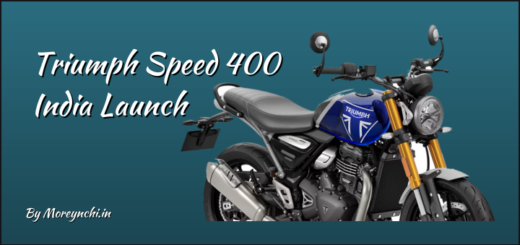Decoding the Diversity: Exploring the Types of Automatic Transmissions
Introduction
Automatic transmission systems have transformed how we drive, providing convenience, comfort, and improved efficiency. With advancements in automotive technology, various types of automatic transmission systems have emerged, each offering distinct features and benefits. In this article, we will delve into the diverse world of automatic transmission systems, look at different types of automatic transmissions, and explore their functionalities.

What is Automatic Transmission?
Automatic transmission refers to a mechanism that enables seamless gear shifting in a vehicle without the need for manual intervention. It utilizes a combination of mechanical, hydraulic, and electronic systems to facilitate automatic gear changes based on factors such as vehicle speed and engine RPM. Let’s explore the different types of automatic transmissions available in the market.
Exploring Different Types of Automatic Transmission Systems
1. Intelligent Manual Transmission (iMT)
Intelligent Manual Transmission, or iMT, is a relatively new technology that combines the convenience of an automatic transmission with the engagement of a manual transmission. It features a manual gear shift lever without a clutch pedal. Through the use of sensors, the iMT system detects the driver’s intention to shift gears and automatically engages or disengages the clutch. This technology enhances the driving experience, particularly in heavy traffic conditions, by providing smoother gear transitions and improved efficiency.
Also Read
All New Hyundai Verna 2023
2. Automated Manual Transmission (AMT)
Automated Manual Transmission, or AMT, offers an affordable automatic transmission option. It retains the structure of a manual transmission but incorporates an automated clutch and gear-shifting mechanism. By utilizing electronic actuators, the AMT system eliminates the need for manual clutch operation and allows for automated gear changes. AMT transmissions are commonly found in entry-level vehicles, providing a balance between cost-effectiveness and convenience.
3. Continuously Variable Transmission (CVT)
Continuously Variable Transmission, or CVT, stands out for its seamless gear-shifting capabilities. Unlike traditional automatic transmissions with fixed gear ratios, CVT systems utilize a belt and pulley mechanism to provide an infinite number of gear ratios. This enables the engine to operate at its most efficient RPM range, resulting in enhanced fuel efficiency. CVT transmissions are commonly employed in compact cars and hybrid vehicles, offering a smooth and efficient driving experience.
4. Dual-Clutch Transmission (DCT)
Dual-Clutch Transmission, or DCT, combines the benefits of both manual and automatic transmissions. It incorporates two separate clutches—one for odd-numbered gears and another for even-numbered gears. This design allows for lightning-fast gear changes, as one clutch engages the next gear while the other pre-selects the subsequent gear. DCT systems are often preferred in high-performance sports cars, offering quick and precise shifts that enhance both performance and efficiency.
5. Torque Converter Transmission
Torque Converter Transmission is the most prevalent type of automatic transmission system. It relies on a hydraulic torque converter to transfer power from the engine to the transmission. The torque converter ensures smooth operation and allows the vehicle to come to a complete stop without stalling the engine. This makes it particularly suitable for city driving, where frequent stops and starts are common. Torque converter transmissions are widely used across different vehicle types and provide reliable performance.
6. Hybrid Transmission
Hybrid Transmission is specifically designed for hybrid vehicles that combine an internal combustion engine with an electric motor. These transmissions seamlessly integrate power from both sources, optimizing fuel efficiency and performance. Hybrid transmissions often incorporate a combination of different transmission technologies, such as CVT or DCT, to achieve the desired balance between power and efficiency, making them a key component of eco-friendly driving solutions.
Conclusion
Automatic transmission systems have revolutionized the driving experience, offering convenience, comfort, and efficiency. From the intelligent manual transmission (iMT) to the continuously variable transmission (CVT), dual-clutch transmission (DCT), torque converter transmission, and hybrid transmission, each type provides unique advantages suited to different driving preferences and requirements. As automotive technology continues to evolve, we can expect further advancements in automatic transmission systems, paving the way for even more enhanced driving experiences in the future.
Stay Healthy, Stay Safe, Jai Hind!
FAQs
1. What is an automatic transmission?
An automatic transmission is a mechanism in a vehicle that enables seamless gear shifting without manual intervention. It utilizes a combination of mechanical, hydraulic, and electronic systems to automatically control gear changes based on factors such as vehicle speed and engine RPM.
2. How does an intelligent manual transmission (iMT) work?
Intelligent Manual Transmission (iMT) combines the convenience of an automatic transmission with the engagement of a manual transmission. It features a manual gear shift lever without a clutch pedal. Through the use of sensors, the iMT system detects the driver’s intention to shift gears and automatically engages or disengages the clutch, providing smoother gear transitions and improved efficiency.
3. What are the benefits of automated manual transmissions (AMT)?
Automated Manual Transmissions (AMT) offer an affordable automatic transmission option. They retain the structure of a manual transmission but incorporate an automated clutch and gear-shifting mechanism. AMT transmissions eliminate the need for manual clutch operation, providing convenience while maintaining cost-effectiveness.
4. How does a continuously variable transmission (CVT) work?
Continuously Variable Transmissions (CVT) utilize a belt and pulley mechanism to provide an infinite number of gear ratios, unlike traditional automatic transmissions with fixed gear ratios. This allows the engine to operate at its most efficient RPM range, resulting in improved fuel efficiency and a smooth driving experience.
5. What is a dual-clutch transmission (DCT)?
Dual-Clutch Transmission (DCT) combines the benefits of manual and automatic transmissions. It features two separate clutches—one for odd-numbered gears and another for even-numbered gears. DCT systems enable quick and precise gear changes, enhancing both performance and efficiency.
6. How does a torque converter transmission work?
Torque Converter Transmissions rely on a hydraulic torque converter to transfer power from the engine to the transmission. The torque converter allows the vehicle to come to a complete stop without stalling the engine, making it ideal for city driving.
7. What is a hybrid transmission?
Hybrid Transmissions are designed for hybrid vehicles that combine an internal combustion engine with an electric motor. These transmissions seamlessly integrate power from both sources, optimizing fuel efficiency and performance.
8. Which automatic transmission systems are highly used in India?
In India, the most commonly used automatic transmission systems are AMT (Automated Manual Transmission) and CVT (Continuously Variable Transmission). AMT transmissions are cost-effective and often found in entry-level vehicles, while CVT transmissions offer smoothness and fuel efficiency and are commonly employed in compact cars and hybrid vehicles.



